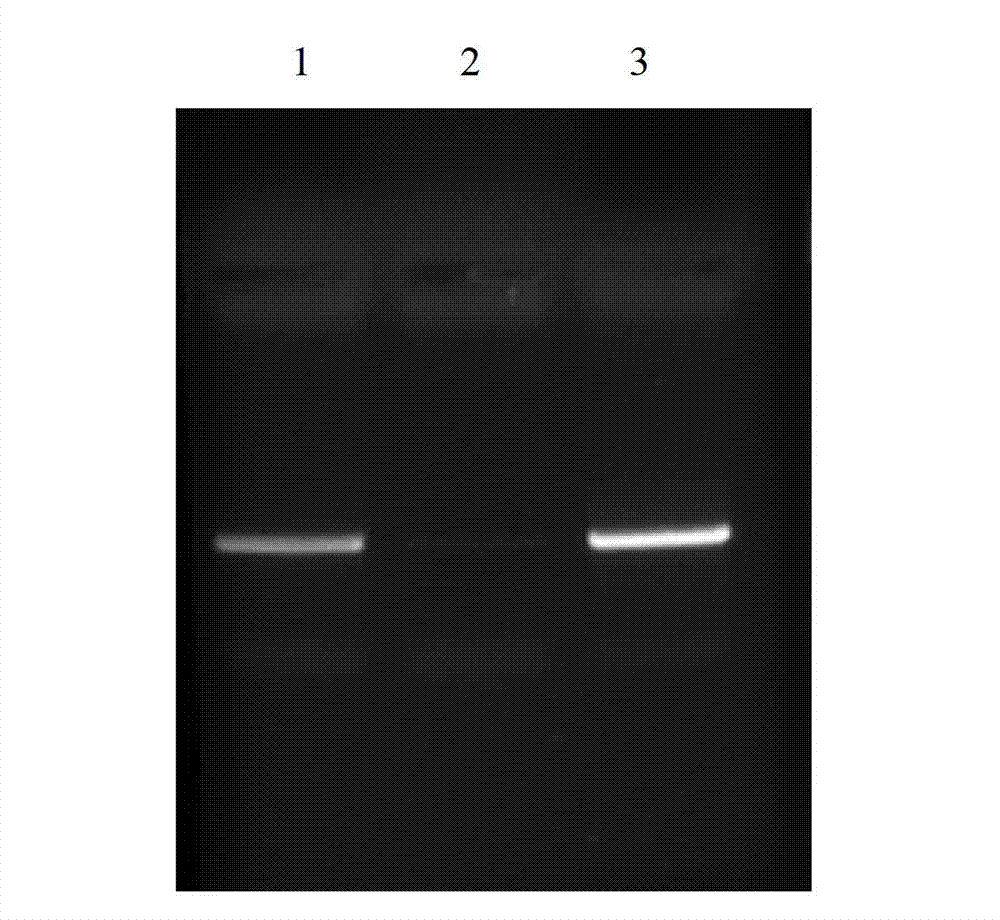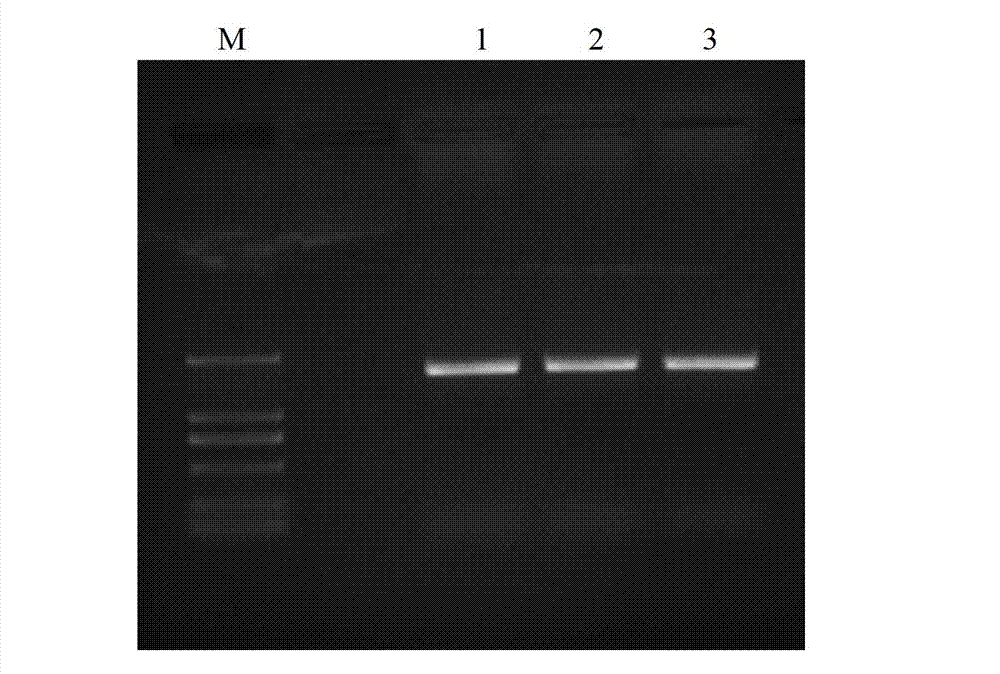Extraction method of fly intestinal microorganism total DNA (deoxyribonucleic acid)
A technology of intestinal microorganisms and extraction methods, which is applied in the field of extraction of total DNA of intestinal microorganisms of flies, can solve the problems of low cell lysis rate, complex components, degradation and shearing, etc., and achieve high purity of DNA molecules and simple operation steps , The effect of less operation disturbance
- Summary
- Abstract
- Description
- Claims
- Application Information
AI Technical Summary
Problems solved by technology
Method used
Image
Examples
example 1
[0034] (1) Add 1 mL of STE buffer to a sterilized 3 cm Petri dish, remove the midguts of 10 houseflies with a dissecting needle and tweezers under a stereomicroscope, suspend them in STE buffer, remove excess tissue, and use tweezers Crushing the midgut to obtain a midgut suspension;
[0035] (2) Transfer the midgut suspension to a sterile 1.5mL centrifuge tube, vortex for 1min, centrifuge at 200rmp for 2min, and transfer the upper layer liquid to a new sterile 1.5ml second centrifuge tube;
[0036] (3) Add 0.5mL STE buffer solution to the original sterile 1.5mL centrifuge tube, repeat step 2, 2-3 times, and combine the upper bacterial solution;
[0037] (4) Put the combined upper layer of bacterial liquid into a sterile 1.5mL third centrifuge tube, centrifuge at 5000-8000rpm for 2min until a dense precipitate is formed, absorb and discard the upper layer, and resuspend the precipitate with 200 μL STE buffer;
[0038] (5) Add lysozyme to the precipitation solution so that the...
example 2
[0046] (1) Add 1 mL of STE buffer to a sterilized 3 cm Petri dish, remove the midguts of 10 Chrysocephala botflies with a dissecting needle and tweezers under a stereomicroscope, suspend them in STE buffer, remove excess tissue, and use The midgut was crushed with forceps to obtain the midgut suspension;
[0047] (2) Transfer the midgut suspension to a sterile 1.5mL centrifuge tube, vortex for 1min, centrifuge at 200rmp for 2min, and transfer the upper layer liquid to a new sterile 1.5ml second centrifuge tube;
[0048] (3) Then add 0.5mL STE buffer solution to the original sterile 1.5mL centrifuge tube and repeat step 2, 2-3 times, and combine the upper bacterial solution;
[0049] (4) Place the combined supernatant bacterial solution in a new sterile 1.5ml third centrifuge tube, centrifuge at 5000-8000rpm for 2min until a dense precipitate is formed, absorb and discard the supernatant liquid, and resuspend the precipitate with 200μLSTE buffer;
[0050] (5) Add lysozyme to t...
example 3
[0058] (1) Add 1mL of STE buffer to a sterilized 3cm petri dish, remove the midgut of 10 A. macrocephala with a dissecting needle and tweezers under a stereomicroscope, suspend in STE buffer, and remove excess tissue , crush the midgut with tweezers to obtain the midgut suspension;
[0059] (2) Transfer the midgut suspension to a sterile 1.5mL centrifuge tube, vortex for 1min, centrifuge at 200rmp for 2min, and transfer the upper layer liquid to a new sterile 1.5ml second centrifuge tube;
[0060] (3) Then add 0.5mL STE buffer solution to the original sterile 1.5mL centrifuge tube and repeat step 2, 2-3 times, and combine the upper bacterial solution;
[0061] (4) Place the combined supernatant bacterial solution in a new sterile 1.5ml third centrifuge tube, centrifuge at 5000-8000rpm for 2min until a dense precipitate is formed, absorb and discard the supernatant liquid, and resuspend the precipitate with 200μLSTE buffer;
[0062] (5) Add lysozyme to the precipitation soluti...
PUM
 Login to View More
Login to View More Abstract
Description
Claims
Application Information
 Login to View More
Login to View More - R&D
- Intellectual Property
- Life Sciences
- Materials
- Tech Scout
- Unparalleled Data Quality
- Higher Quality Content
- 60% Fewer Hallucinations
Browse by: Latest US Patents, China's latest patents, Technical Efficacy Thesaurus, Application Domain, Technology Topic, Popular Technical Reports.
© 2025 PatSnap. All rights reserved.Legal|Privacy policy|Modern Slavery Act Transparency Statement|Sitemap|About US| Contact US: help@patsnap.com


